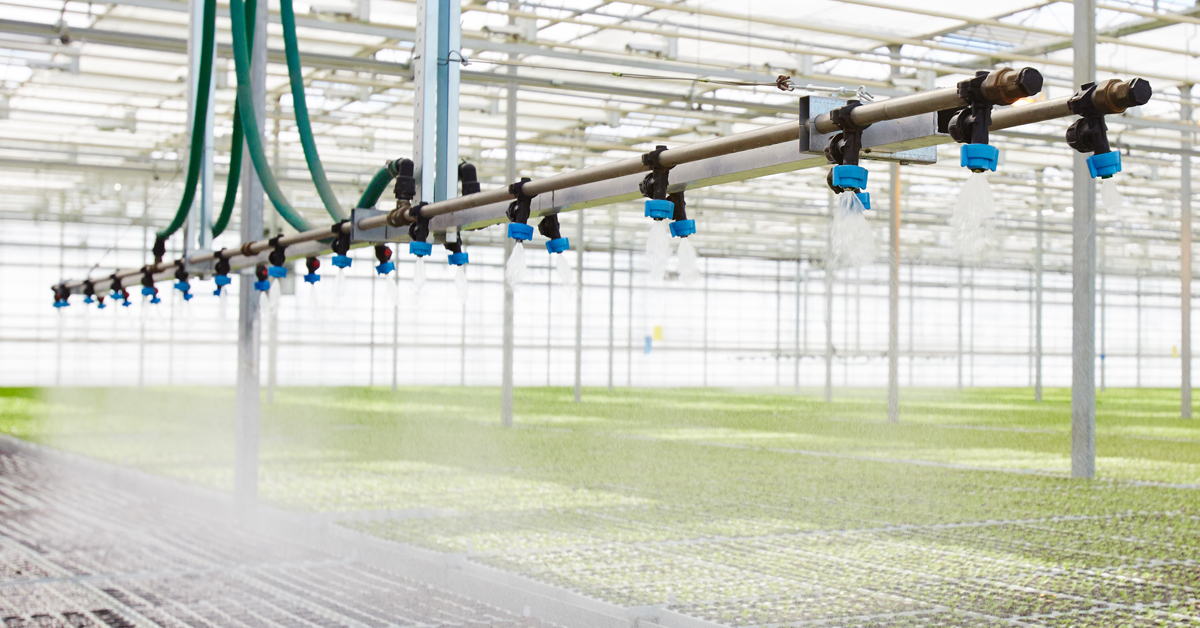

Now that seasonal crops have moved, it’s time to make a checklist to reset your operation and ensure a successful start to the next growing season. This checklist always includes disinfecting benches and changing out evaporative cooling pads. The job that’s the worst to forget and the worst to do is disinfecting irrigation systems. Irrigation lines are often out of sight and out of mind. It’s easy to forget they need a proper cleanout, but as the lifeline of the operation, it’s easily the most important job to get done at the end of the season.
Irrigation lines are the perfect environment for biofilm: constant water and low light create an environment prime for microbial growth. Utilizing liquid nutrients, recycled water, or untreated surface water often makes the situation much worse. Biofilm clogs nozzles and emitters, causes leaky valves, and reduces flow, which all directly affect crop health and vigor. Pest issues also arise from the buildup on leaky emitters and algae covering uprights, the biofilm becomes a food source and breeding ground for insects. Aside from insect pests, biofilm contains and spreads plant pathogenic organisms including bacteria and water molds like Pythium and Phytophthora.
Biofilm is a complex matrix of bacteria that has three distinct phases: attachment, maturation, and dispersion. The initial attachment phase occurs when bacterial colonies adhere to any wet surface including irrigation lines. In the maturation phase, biofilm develops circulatory channels, and individual microcolonies, and creates an exterior layer of polysaccharide exudates. The sticky, protective outer surface becomes a haven for passing microorganisms like plant pathogenic bacteria, fungi, and algae. This layer also catches fertilizer precipitants, which form an outer mineral layer that protects the biofilm from chemical treatment. The final dispersal stage starts when the production of matrix components decreases and the contained microbial community moves downstream and starts the whole process over.
Keeping the outer protective mineral layer in mind, it’s vital to implement a two-step ‘line shock’ to successfully remove biofilm. During the first step, inject a sulfuric acid product like GreenClean® Acid Cleaner to drastically drop pH, liquefy any mineral deposits, and scarify the polysaccharide layer; priming it for the next disinfection step. The final disinfection step oxidizes the polysaccharide layer with a high-strength disinfectant such as SaniDate® 5.0. This step requires a longer dwell time in the lines to target bacteria, fungi, yeasts, and algae. Both holding steps require a final freshwater flush with 1-2 times the irrigation system volume, discharging out of dump/flush valves. The detached biomass that’s evacuated from the system requires larger openings and shouldn’t be forced through mist nozzles and drip emitters.
End your season strong with a thorough cleanout to guarantee your following year has a fresh start. Biofilm often forms silently and invisibly within irrigation systems, but the two-step line shock process is the most effective way to clean and sanitize the lifeline of your operation. With a successful line shock, we can sleep well knowing biofilm and its co-inhabiting plant pathogen partners won’t be starting the next season along with you.
Originally written for the LNLA.


